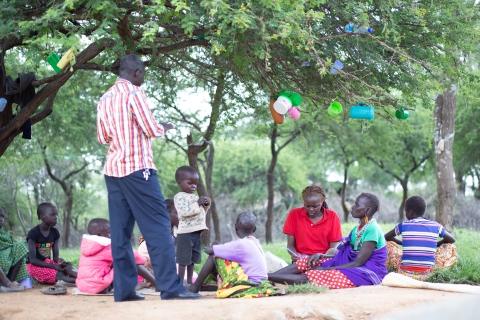
Journalist Verah Okeyo, one of the first recipients of the inaugural ICFJ Alumni Reporting Grants, has noticed for years how frustrated fellow Kenyans are with their medical care. And, she believes, news outlets in her country are failing to comprehensively cover the health issues people are facing.
Okeyo, a science reporter at The Nation, has only heard more complaints from citizens since 2013, when Kenya’s government decentralized and passed responsibilities to elected county governments in an attempt to foster greater local development. She decided it was time for more health reporting and seek funding to support the work.
“[News outlets] are a bit reluctant to put large amounts of money on health reporting projects,” said Okeyo. Instead, she found funding and mentorship from an ICFJ alumni grant. Backed by the Microsoft Modern Journalism program, these special grants help support data journalism and immersive storytelling projects.
Using her grant, Okeyo has launched an in-depth data journalism project exploring the mortality of children younger than five in Kenya. She and her team pulled data from the Kenya Medical Research Institute on the child mortality rate from 1960-2013. They used Power BI data visualization software to analyze the numbers and determine which stories needed to be told — for example, spotlighting counties that showed little improvement in their child mortality rates, time periods with high child mortality rates, and more.
The software helped identify stories to pursue and exposed numbers that challenged stereotypes. For instance, the Ministry of Health releases an annual report on mortality, and the counties in the former Nyanza province always have the highest levels of child mortality. However, reporters have often failed to address how these numbers stack up against previous years, Okeyo noted. Since 1960, this region has actually reduced its child mortality rate by as much as 70%.
Meanwhile, counties like Nyeri, Nyandarua and Kirinyaga in central Kenya, where there is a relatively low number of child mortalities, have made few improvements in the same timespan. Here, child mortality has only decreased by 20-30%.
Okeyo also wanted to understand the “why” behind all the numbers. “[The researchers] haven't explained — was it because of venereal diseases or because of lack of vaccination?” Okeyo said. “That's what we had to do, mostly relying on people's memories and recollections of how life was at that time.”
In the ensuing months, Okeyo and her team conducted 28 interviews around the country, using an interview technique she calls “grounded theory interviewing.” Rather than arriving with a set of guided questions, interviewers ask open-ended questions like, “What was it like to raise a child in 1980?” Comparing her interviews with the data from governmental and nongovernmental agencies, Okeyo and her team have identified major contributing factors to child mortality, such as regional outbreaks of pneumonia and a lack of access to medicine.
The team will be publishing at least ten stories on the topic, on a separate portal on The Nation’s website. The portal will feature stories and interactive data visualizations, and readers will be able to send in tips on maternal and child health via WhatsApp.
Okeyo hopes the tip line will bring more stories to the forefront, helping to "democratize maternal and child health journalism.”
“Given the size of the media house that I work for, there have been complaints about us being elitist — detached from people's everyday lives. This is an opportunity to actually welcome the public."
Above all, Okeyo hopes her reporting can serve as an inspiration for future large-scale health journalism projects in Africa. "It's an opportunity to not only show off what we're doing, but if we're ever able to do this on a bigger scale, my project will be a learning point.”
This article first appeared on IJNet. Learn more about Verah Okeyo’s work and ICFJ's alumni grants.
Taylor Mulcahey is the IJNet English and Engagement Editor, responsible for the website’s English-language content, social media and audience engagement.